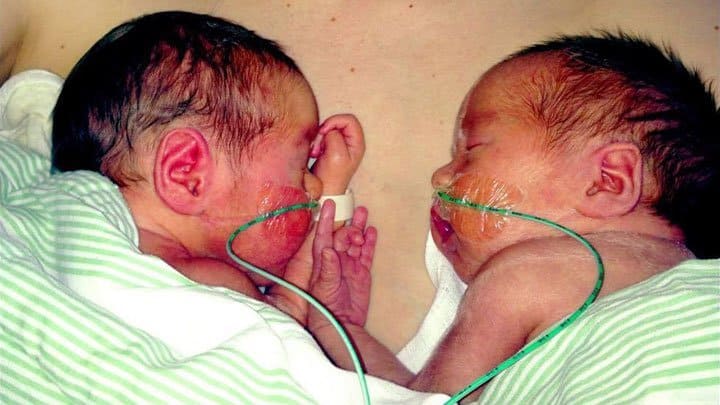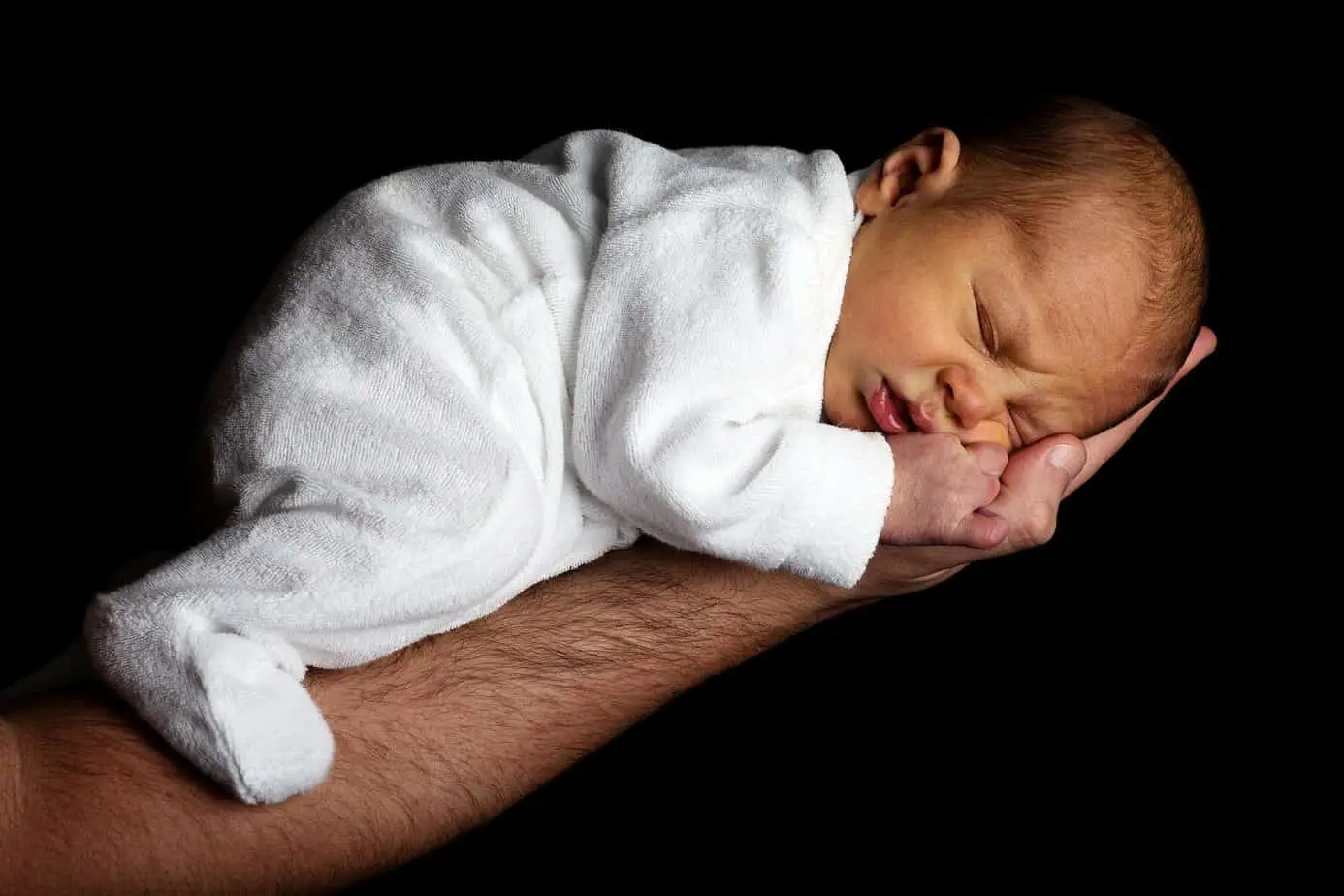Twin Ultrasound: What All Women Pregnant With Twins Need To Know
What is an ultrasound scan?
A prenatal ultrasound is also called a sonogram and is a noninvasive diagnostic test. Sound waves are used to create a visual image of your babies, placenta, and uterus.
You’ll be able to see for yourself on a computer together with the sonographer. Ultrasound scans are usually done through the abdomen, but early in pregnancy, they’ll be done through the vagina. A basic ultrasound takes about 15 to 20 minutes.
A more detailed twin ultrasound scan can take anywhere from 30 to 90 minutes or more. All twins can be detected after week 6+0. Read more about how early you can detect twins.
When will I have my first scan if I’m in fertility treatment?
If you’re in fertility treatment you’ll probably have your first vaginal ultrasound scan around week 6. All women, who are suspected to have a twin pregnancy or who are at risk, should have a first-trimester ultrasound performed.
Pregnancies resulting from assisted reproductive technologies are in the high-risk category. The conclusion of a 2017 study that explored recommendations for best use of twin ultrasound, stated, that a twin pregnancy, that is the result of in vitro fertilization, should have an accurate determination of gestational age made from the date of embryo transfer.
When will I have my first scan if I’m not in fertility treatment?
Most doctors recommend that the first scan occur when you’re between 11 and 13+6 weeks pregnant. They’ll do a scan through your abdomen, and even though one baby is usually what they expect to find, they’ll check for multiples.
They’ll also check the health of your babies and that your babies are growing as they should be. Dating should be done with first-trimester ultrasound and your due date should either be confirmed or moved depending on the size of your babies.
Beyond the first trimester, it is suggested that a combination of parameters rather than a single parameter should be used to confirm gestational age. You should also be offered a nuchal translucency ultrasound scan to assess your baby’s risk of having Down syndrome and other chromosomal abnormalities as well as major congenital heart problems.
This is also around the time you should have a chorionicity scan to determine whether or not your twins share a placenta.
What’s a chorionicity scan?
Every attempt should be made to determine and report chorionicity and amnionicity when a twin pregnancy is identified. It’s important to know about chorionicity and amnionicity to be on the lookout for twin pregnancy complications such as Twin to Twin Transfusion Syndrome (TTTS) and Twin Anemia Polycythemia Sequence (TAPS).
Chorionicity relates to the number of placentas. Amnionicity refers to the number of amniotic sacs (or membranes).
What’s all this about placentas and sacs?
Twin can have their own outer and inner sacs. If they do, they are dichorionic-diamniotic (di-di) twins. All fraternal twins are di-di twins, and about one-third of identical twins are di-di twins.
Di-di twins always have their own placenta. Twins can also share the outer sac and have two separate inner sacs. They are monochorionic-diamniotic (mo-di) twins and are always identical. About two-thirds of identical twins are mo-di twins.
They always share a placenta. Twins can also share both the outer sac and inner sac. They are called monochorionic-monoamniotic (mo-mo) twins and are very rare.
About one percent of all identical twins are mo-mo twins. They always share a placenta.
| Di-di twins | Mo-di twins | Mo-mo twins |
|---|---|---|
| Separate outer sacs | Shared outer sac | Shared outer sac |
| Separate inner sacs | Separate inner sacs | Shared inner sac |
| 2 placentas | 1 shared placenta | 1 shared placenta |
| Fraternal or identical | Always identical | Always identical |
How do fraternal and identical twins develop?
Identical twins stem from the same egg (zygote). That egg was fertilized by one single sperm cell before the egg split and developed into two separate babies.
If the split happens from 0-3 days after the egg is fertilized, the twins become di-di twins.
If it happens 4-9 days after conception they become mo-di twins.
If it happens 10-12 days after conception they become mo-mo twins. Because these twins stem from the same egg and sperm cell, they have the same chromosomes and genes. However, although they share the same genetic characteristics, identical twins are not necessarily exactly alike due to environmental differences – for instance, different growth conditions in the womb.
With fraternal twins it’s different. They started out being two separate eggs that were fertilized by two different sperm cells. Because of this, they only share about 50 percent of the same DNA, as does all siblings conceived by the same mother and father.
Fraternal twins are always di-di twins. Read more about different types of twins.
What types of twin ultrasound scans should I have?
Besides the dating and chorionicity scan, you should have a detailed ultrasound examination to screen for fetal anomalies, preferably between 18 and 21 weeks’ gestation.
If you’re expecting twins that share a placenta, you need to receive ultrasound surveillance biweekly including Doppler scans. A Doppler scan measures the blood flow through the umbilical cord and around different parts of your baby’s bodies.
You should have them biweekly from 16 weeks’ gestation. This is crucial in order to look out for signs of TTTS or TAPS. Read more about TTTS stages and the ultrasound findings they are based on.
It’s important that your sonographer knows about – and can detect – these types of complications. If this is not the case, you need to be referred to a more specialized facility.
If you’re having di-di twins, recommendations may differ depending on your health, the health of your babies, how difficult your pregnancy is and what’s considered best practice by your doctor.
An ultrasound scan once a month might be sufficient during the first and second trimester, whereas many doctors might want to see you more often during the third trimester.
Can you use ultrasound scans to look for signs of preterm birth?
Yes. A 2017 study concluded that endovaginal ultrasound measurement of the cervical length should be performed when ultrasound is used to screen for preterm birth in twin gestation. Endovaginal ultrasound is a special form of ultrasound developed to examine the pelvic organs.
How should gestational age be determined if there’s a size discrepancy?
A 2017 study showed that there is insufficient evidence to make a recommendation of which baby (when discordant for size) to use to date a twin pregnancy. However, to avoid missing a situation of early intrauterine growth restriction in one twin, most experts agree that the clinician may consider dating pregnancy using the larger baby.
Increased surveillance should be considered when growth restriction is diagnosed in one twin or if there is significant growth discordance.














